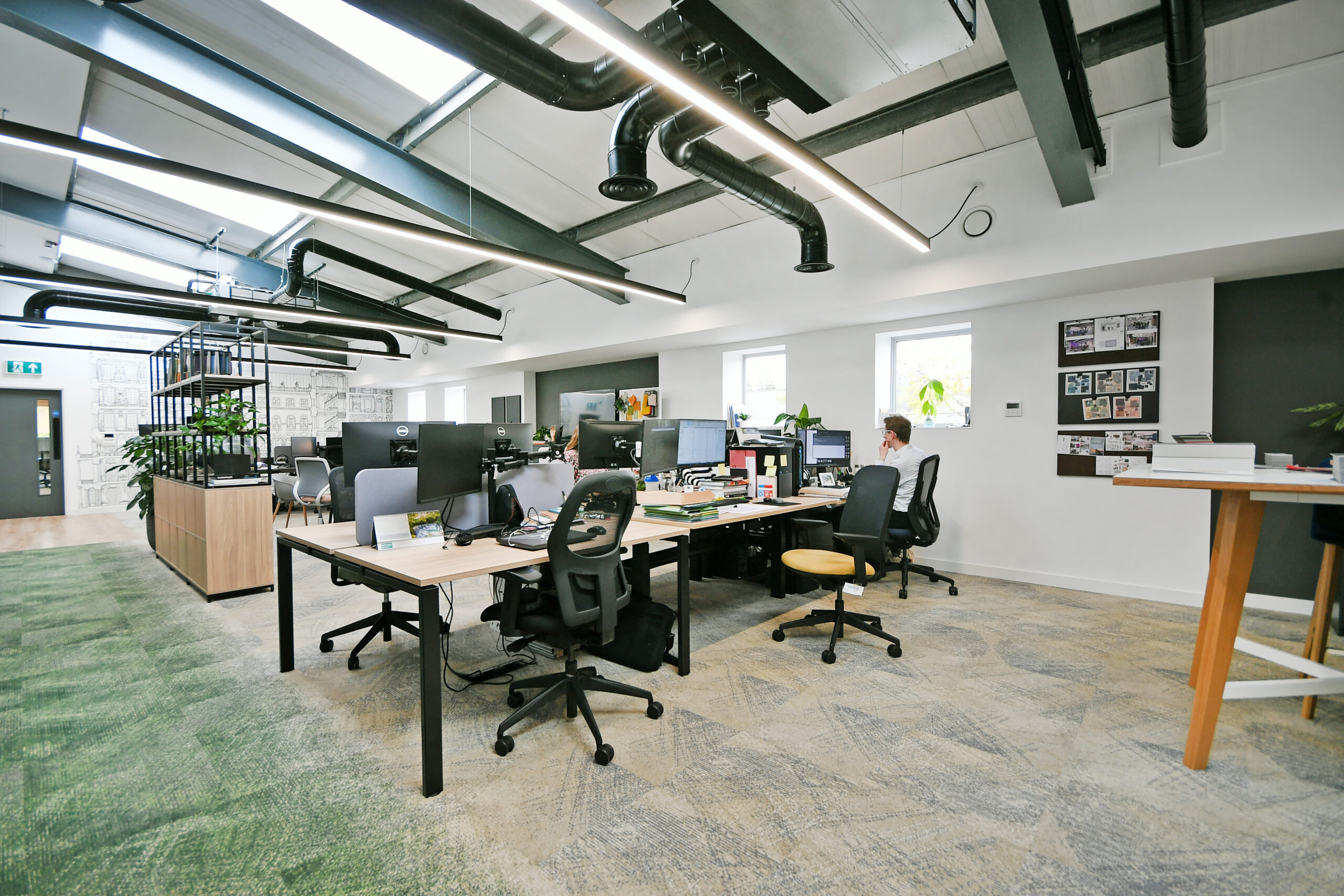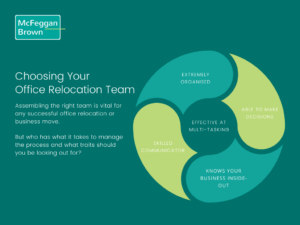The Ultimate Guide To Moving Offices

If your business has outgrown its current premises and you need the additional space to work effectively, you may have considered moving offices – this can be a great way to achieve a more functional work space that encourages staff collaboration and communication.
Be aware! Office relocation is a major project that requires careful planning and consideration.
There are many independent factors to consider and several boxes to tick off, but don’t worry. Like all processes, office relocation can be broken down into a series of small, manageable tasks that will ensure your move goes as smoothly as possible.
So, here’s our ultimate relocation checklist to make sure nothing falls through the cracks.
Office Relocation Checklist
1. Identify your project team
Before planning an office relocation, you should decide which members of your team will be involved in the project and assign clear roles and responsibilities for the office move.

2. Engage your staff and key stakeholders
Ensure any changes directly affecting your staff are discussed with them as soon as possible (Information & Consultation of Employees Regulations, 2004).
And don’t forget to consult with relevant regulators, board members and employee unions on your plan to move offices.
3. Find a suitable office location
There’s no one-size-fits-all approach when it comes to choosing a suitable office location, so it’s important to establish what your business needs and priorities are.
Some common location priorities are:
- Good public transportation links
- Local amenities
- Parking
- Access to major roadways
- Access to airports
You should always analyse your new office location and make sure that you understand its IT capabilities and facilities.
The most important facilities that your office will need are:
- Wifi
- Printing
- 24/7 access
- Remote access
- Meeting rooms
- Breakout space
4. Establish a relocation budget
We recommend that your business identifies all of the tasks that need to be completed for your office move, no matter how small they are. This will help you to determine the real financial impact of your relocation.
If you’re working with a reputable supplier they will provide full cost estimates for each project element as well as considering the less obvious moving costs:
- Building insurance
- Legal fees
- Office design and fit out costs
- Dilapidation costs on your existing property
Why not check out Hubble’s office budget calculator to get an estimate of how much you should be spending on your next office?

5. Address your telecommunications systems
Telecom offerings are constantly evolving so we recommend shopping around for the right phone system and service contract when moving offices.
Key questions to consider:
- Are you going to embrace new technology and cloud solutions?
- Have you established your required phone line capacity?
- Do you plan on switching providers?
- What are you going to do with your existing phone numbers?
6. Get organised
Moving offices can be a complicated experience but you can minimise the disruptions to your business by:
- Creating an inventory of all your assets and resources
- Carefully labelling all packed boxes
And if you’re choosing to downsize your office to a smaller space, you might also consider:
- Getting rid of your old, bulky office furniture in preparation for new streamlined pieces.
- Decluttering that all important stationary cupboard – only keep the items your business actually needs.

Complete these steps on our office moving checklist and you’ll successfully move offices without a hiccup.
A Successful Office Move
From boosting staff morale to reducing operating costs, moving offices can have a hugely positive impact on your business.
So, if you need a refresh to your current working space, get in touch with our team of office relocation experts today.
Our unique design will reflect and express your organisation’s brand and make all the right impressions, where they count the most.
Plus, we’ll handle all of the moving parts and keep things running on track. Not only that but we can help you to expertly design your new office and take care of office dilapidation requirements.